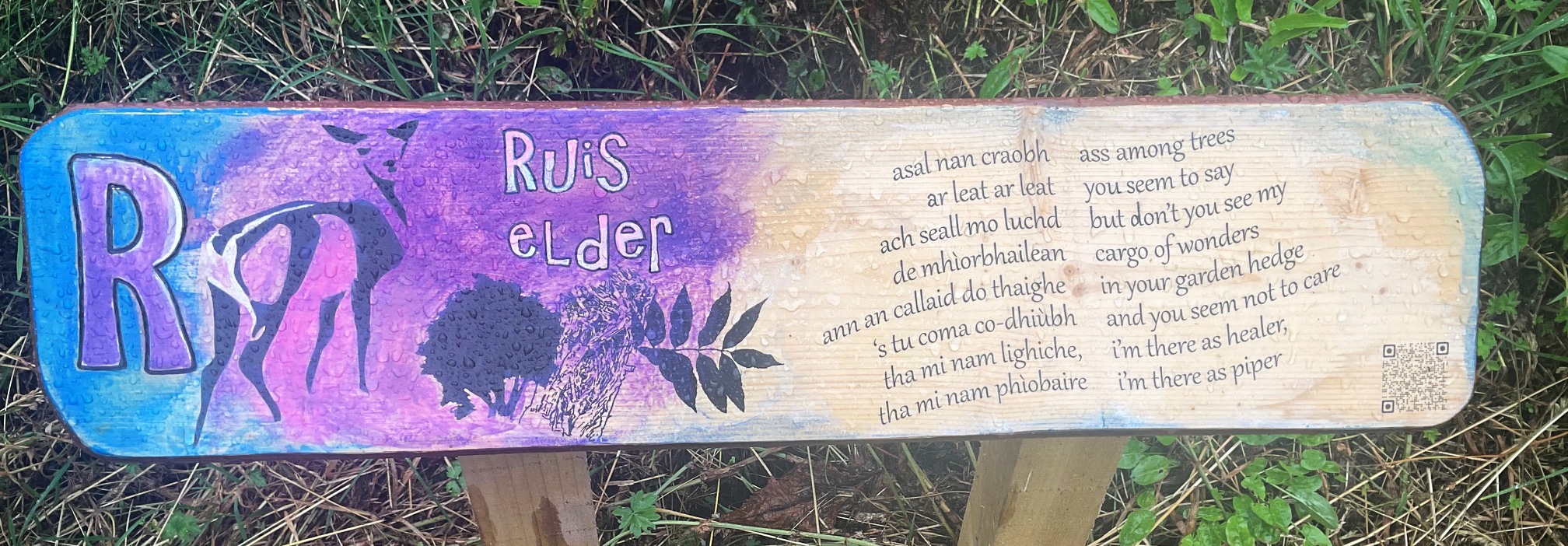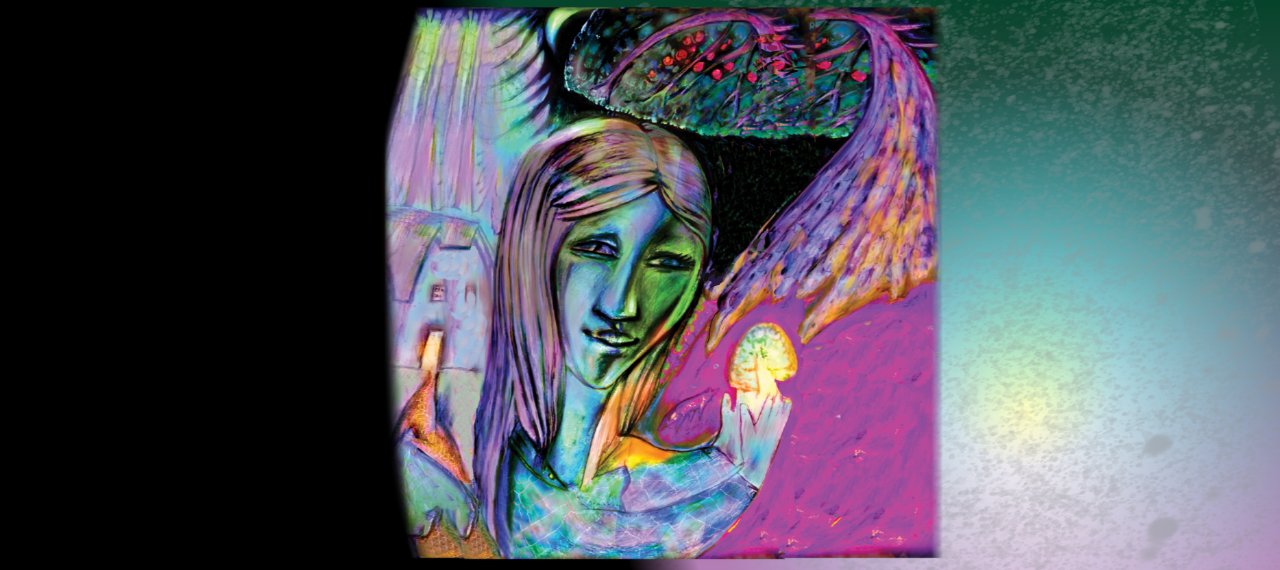
B L N F S H D T C M G P R A O U E I


asal nan craobh
ar leat ar leat
ach seall mo luchd
de mhìorbhailean
ann an callaid do thaighe
‘s tu coma co-dhiùbh
tha mi nam lighiche
tha mi nam phìobaire
ni mi cìr dha do ghruaig
ni mi gunna-séidein dhut
ni mi do dhìon, ma chreideas
tu, bho olc ’s bho éiginn
fìon mo bhlàthan
fuaran bàn dha d’ chridhe
fìon mo dhearcan
lasair ruadh dha d’eanchainn
ann an callaid do thaighe
’s tu coma co dhiùbh
asal nan craobh ’s
mo luchd de mhìorbhailean
ass among trees
you seem to say
but don’t you see my
cargo of wonders
in your garden hedge
and you seem not to care
i’m there as healer
i’m there as piper
i’ll make a comb for you
i’ll make you a pop-gun
protect you, should you have
faith, from evil or want
my blossoms’ wine
a clear spring for your heart
my berries’ wine
a red flame for your mind
in your garden hedge
and you seem not to care
ass among trees with
my cargo of wonders